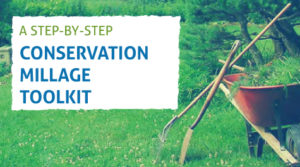Learn How to Fund Natural Areas and Farmland Protection through a Local Government Millage
 This Toolkit offers step-by-step processes for creating a millage campaign for protecting land in your community. Download the ‘Funding Land Protection from Millages Toolkit’ here.
This Toolkit offers step-by-step processes for creating a millage campaign for protecting land in your community. Download the ‘Funding Land Protection from Millages Toolkit’ here.
WHAT YOU’LL LEARN
This Millage Toolkit describes what a millage is, how they can be used to protect land, and takes you through, step-by-step, the process of getting one passed. Topics covered include:
- How to determine feasibility for a land protection millage
- Steps to get a millage proposal on the ballot
- Budgeting, recruiting, planning for a campaign
- Communicating your message to voters
- Getting out the vote
- Setting up your program
- Post campaign action items
THIS TOOLKIT IS FOR:
- Citizens who want to learn how to get their local governments to place a land protection program on the local ballot.
- Local government officials who want to learn more about how their local government would run a land protection millage ballot campaign.
- ANYONE who wants to learn how to run a campaign to get a land protection millage passed in your next election!



